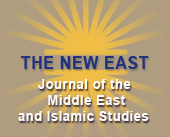A Portrait of a Muslim City:
Social and Religious Institutions in Mamluk Hebron
Yehoshua Frenkel
Accounts and reports produced by Mamluk chronographers depict Hebron as a "Muslim city," dominated by mosques, Sufi lodges and other Islamic institutions. The way of life of its population was governed by the shari`a. Thus, the composers of the Mamluk collections, "fada’il al-khalil," selected those traditions that fit the world view of contemporary audiences. This study analyzes these texts and deals with urban topography, society and pilgrimage.
The discussion also demonstrates how the aesthetic structure of the historical and religious texts, composed for a public familiar with the narratives, aims to convince its readers that they are transmitting an unquestionable truth. This aim was intertwined with power struggles over public influence and resources.

